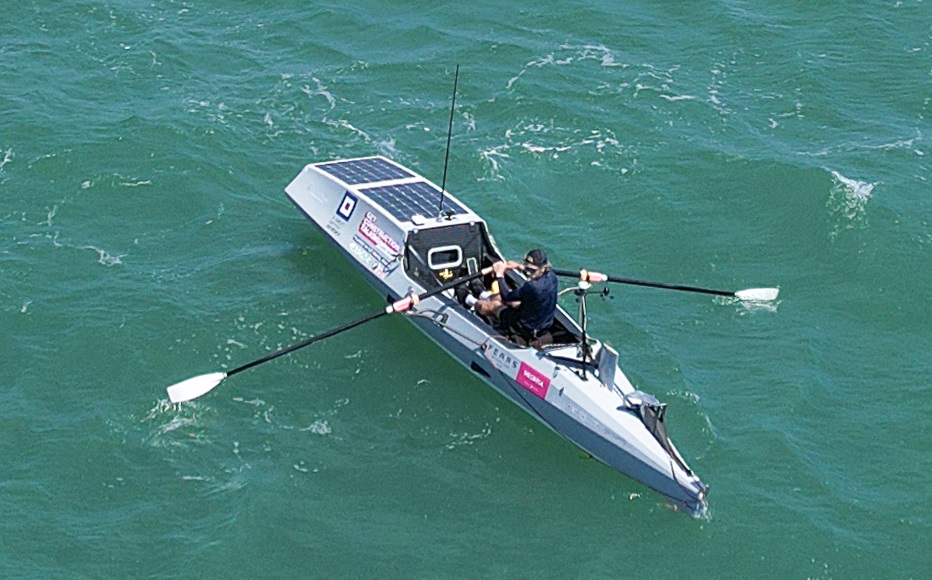In 2024 OC were tasked with the design and engineering of a carbon ocean rowing boat for Angus Collins. Unlike Transatlantic or Transpacific craft built by companies such as Rannoch Adventure and Demon Yachts, his project was a non-stop, unsupported solo rowing expedition around mainland Great Britain. For this expedition he required a self righting craft, but one unlike typical ocean rowing boats; in that is must be able to be rowed upwind and in cross-seas. The 2000 mile route traverses the English Channel, North Sea, Pentland Firth, and Irish Sea—regions noted for variable sea states, conflicting tidal flows that can result in overfalls and significant sea states. What OC developed is as much a skiff as an ocean rowing boat, she was built by Ian Munslow of Carbonish Structures in Millbrook, Cornwall.  Photo by Inkwood Studios In his brief Angus prioritized low displacement, speed, good directional stability, and to be able to row up-wind. OC approached the design like a racing yacht project, beginning with a concept design stage, working with the client to deliver a 3D surface model, general arrangement, and preliminary engineering. It became quickly clear that at a target boat speed of 4 kts in flat water the vessel would operating well below hull speed and that viscous drag would be afar greater contributor to the total drag compared to wave drag. The trade-off between speed, stability and functionality meant the final hull design evolved was 600mm longer and so slightly narrower at the waterline than the first concept hull. What makes the upwind performance possible is the very low windage of the stern and bow, an efficient rudder and a single daggerboard forward. The aft cabin and foredeck geometry are optimised to the greatest extent to aid recovery in the case of a 180 knockdown. When filled; water ballast tanks below the cockpit floor increase the rigthing moment by 50% improving static stability at anchor and making it safer to row when conditions deteriorate. In terms of efficiency OC identified early on that considerable time could be saved when deploying and recovering the anchor by mounting it on a ‘throw arm’. Angus would anchor at the turn of most every tide resulting in nearly two hundred operations during the course of the trip. The throw system keeps him safely in the cockpit at all times. All engineering was carried out in-house, the measured complete composite weight is somewhat less than 100kg and the fully loaded displacement four times that.The structure is heavily optimised. For instance; the flat aft sections of the hull shell are supported by a skeg that functions both as a longitudinal and improves directional stability, unloading the rudder, reducing autopilot use and power requirements. Angus reports that she is “is fast, directionally stable in all conditions, feels like she wants to surf in the smallest following sea and I’m usually using only half the available daggerboard. “ Collins set off on the 28 th June and if succesful the Great British Oddysey project will establish a new benchmark for an unsupported circumnavigation of Great Britain by rowing. To discuss your particular requirements and request a quote: CONTACT US |
